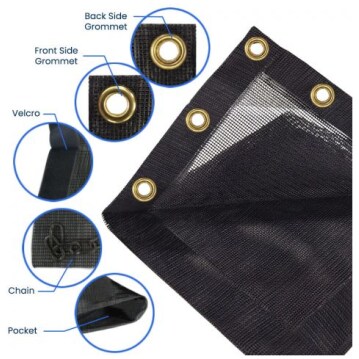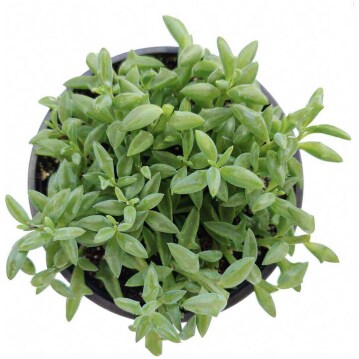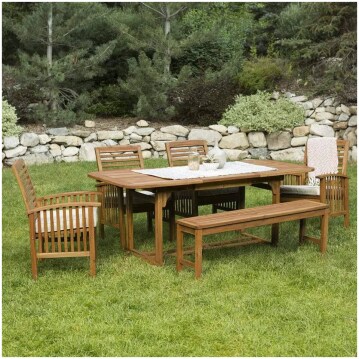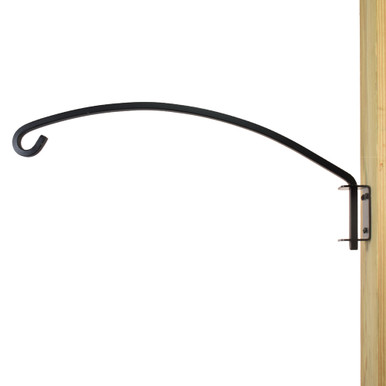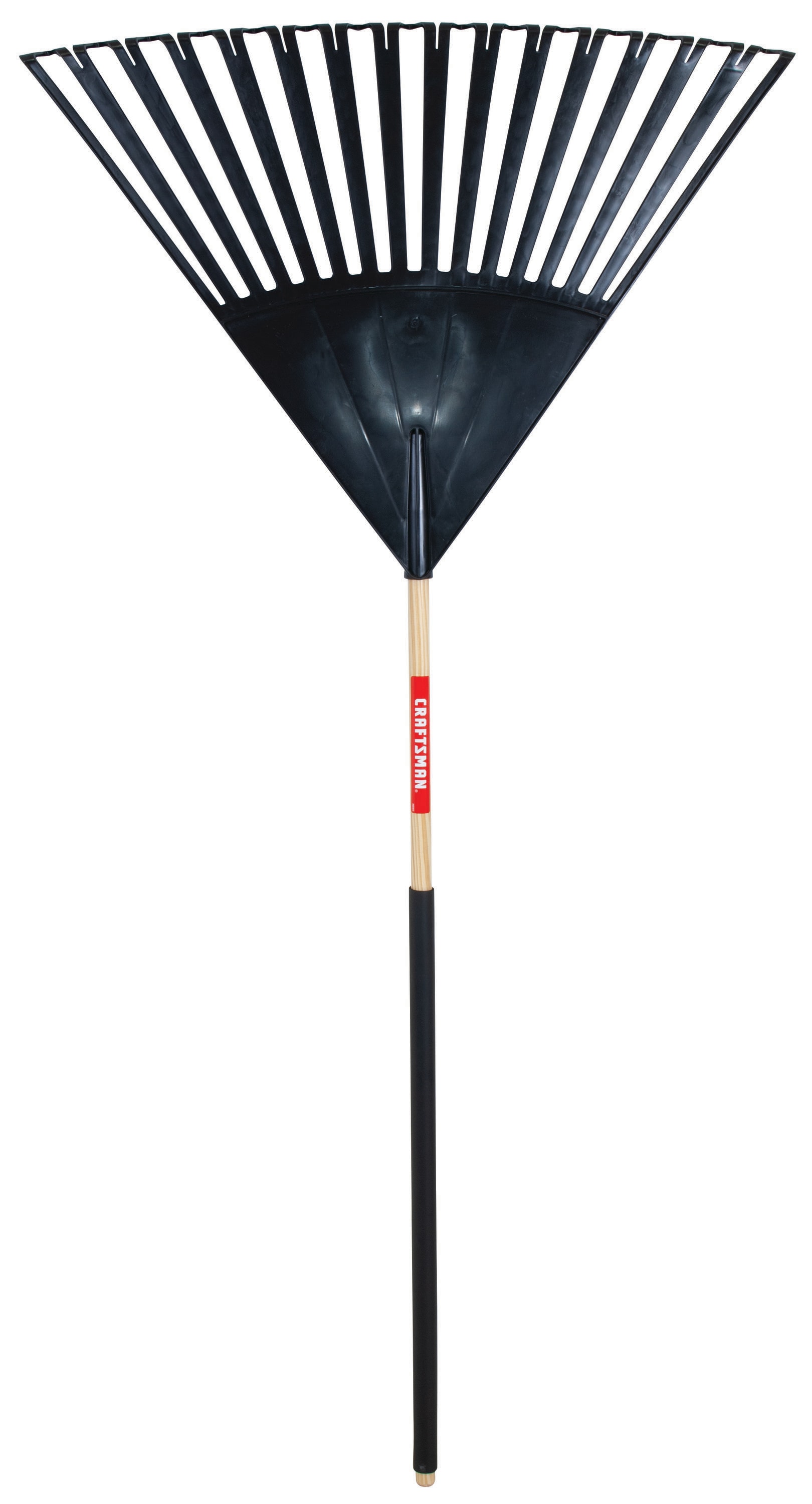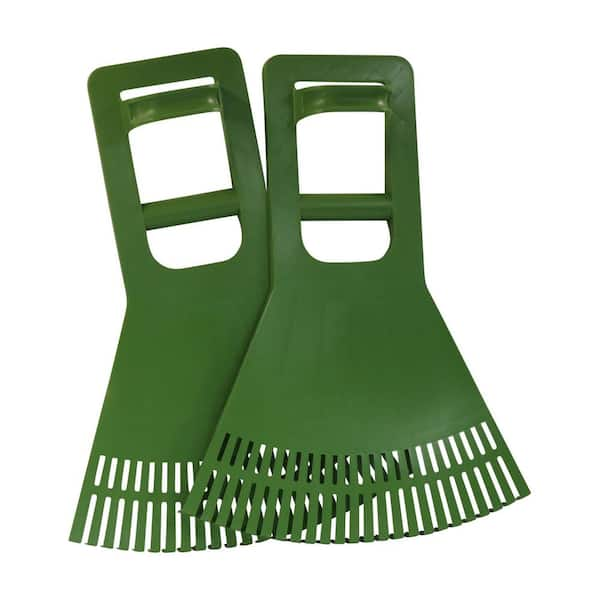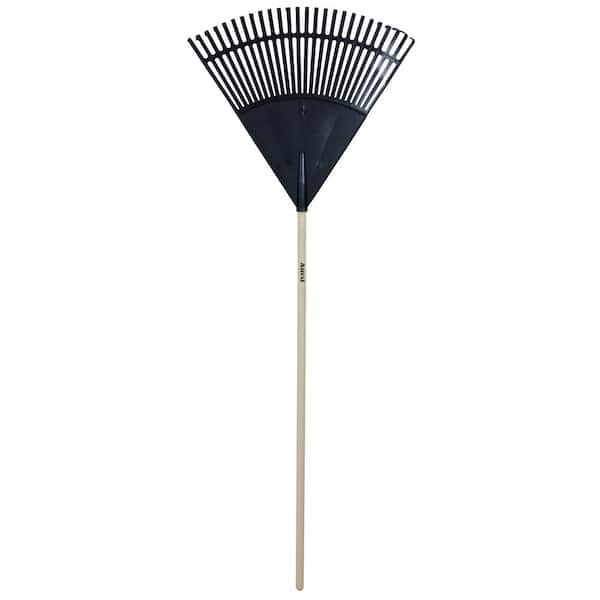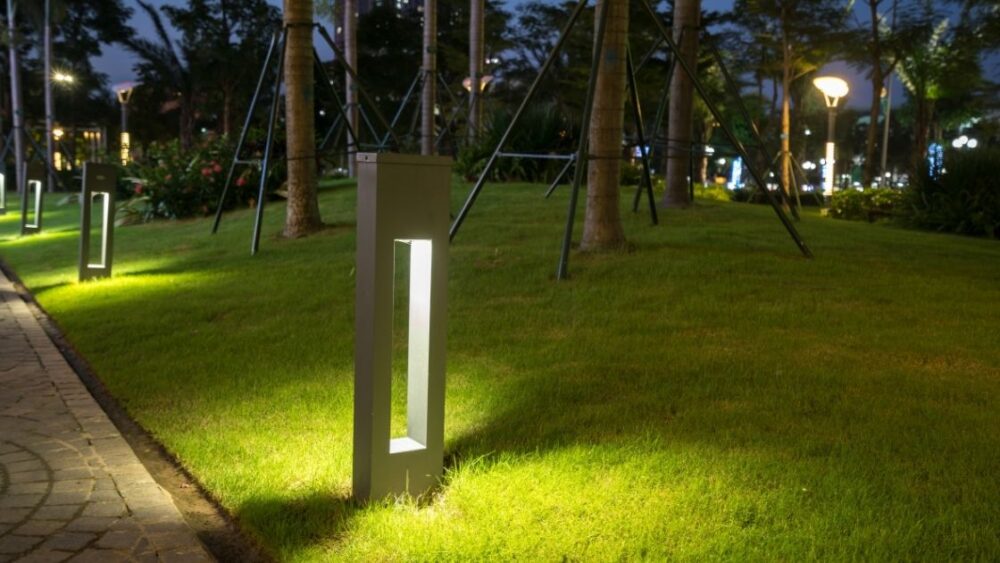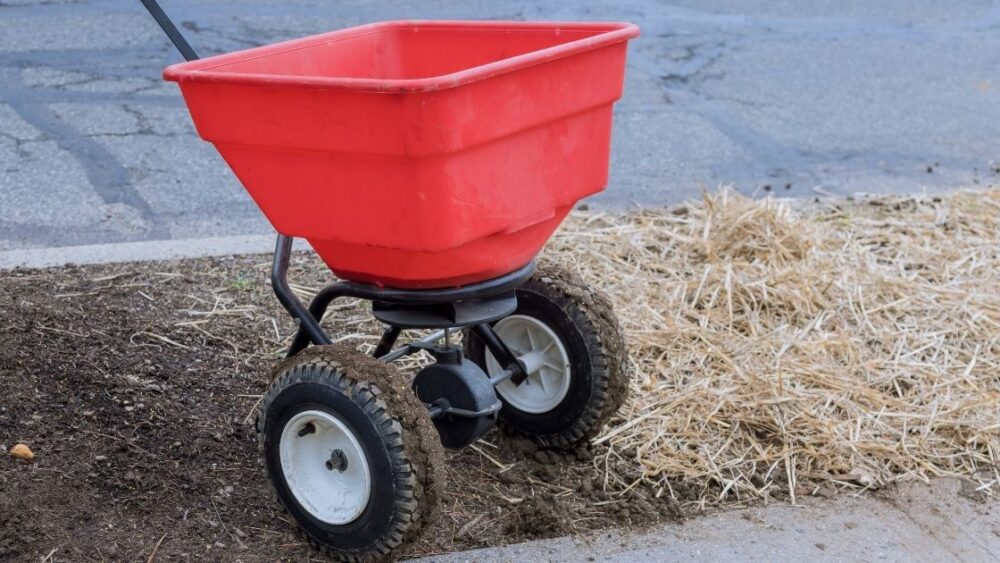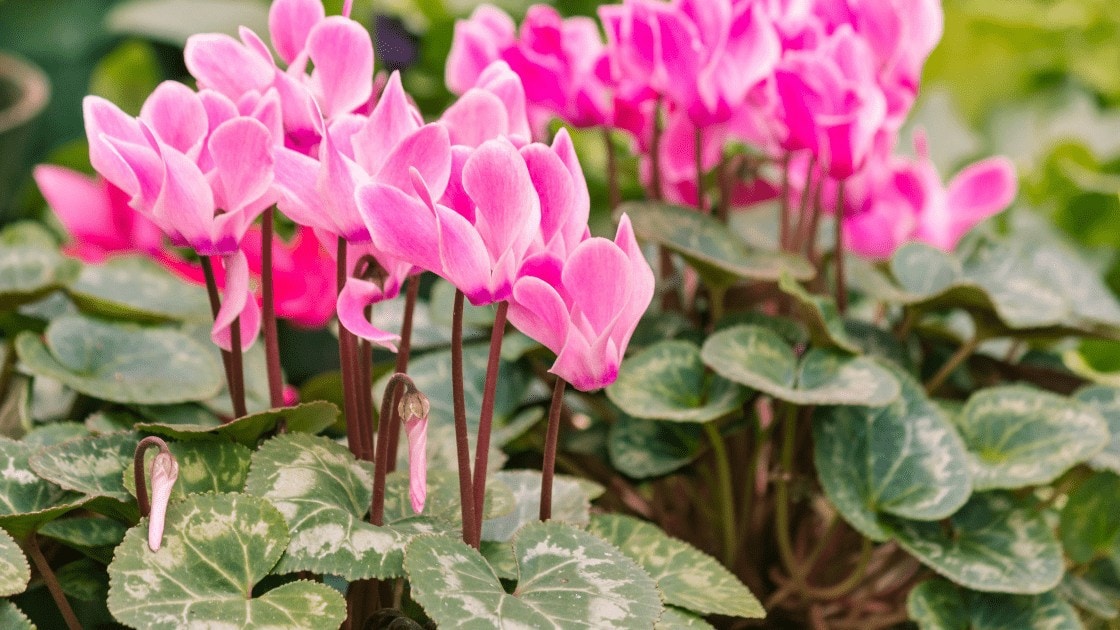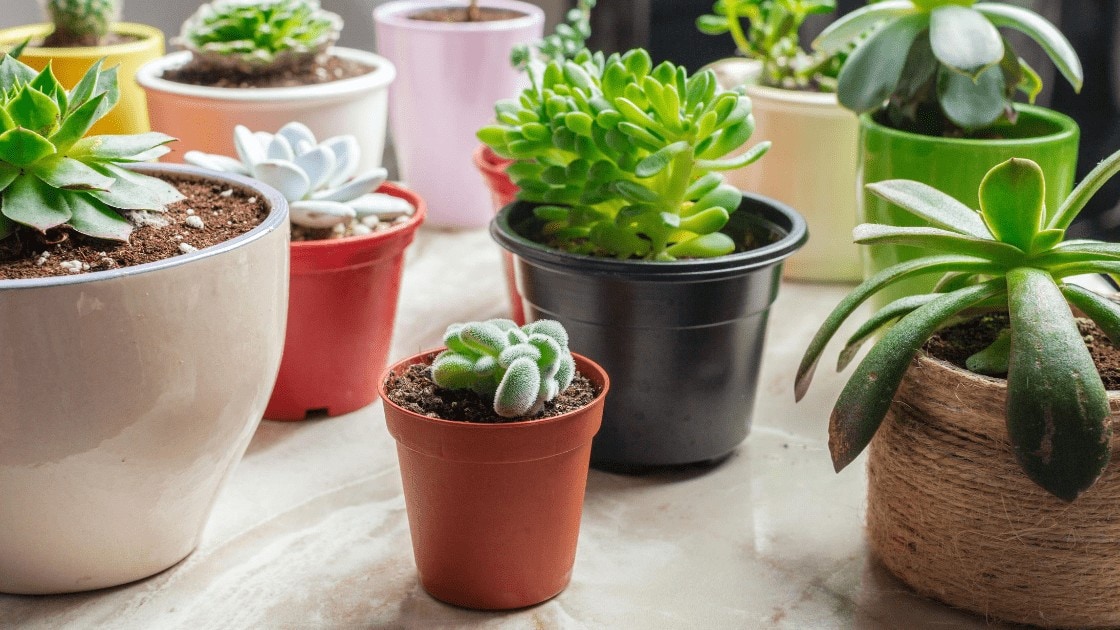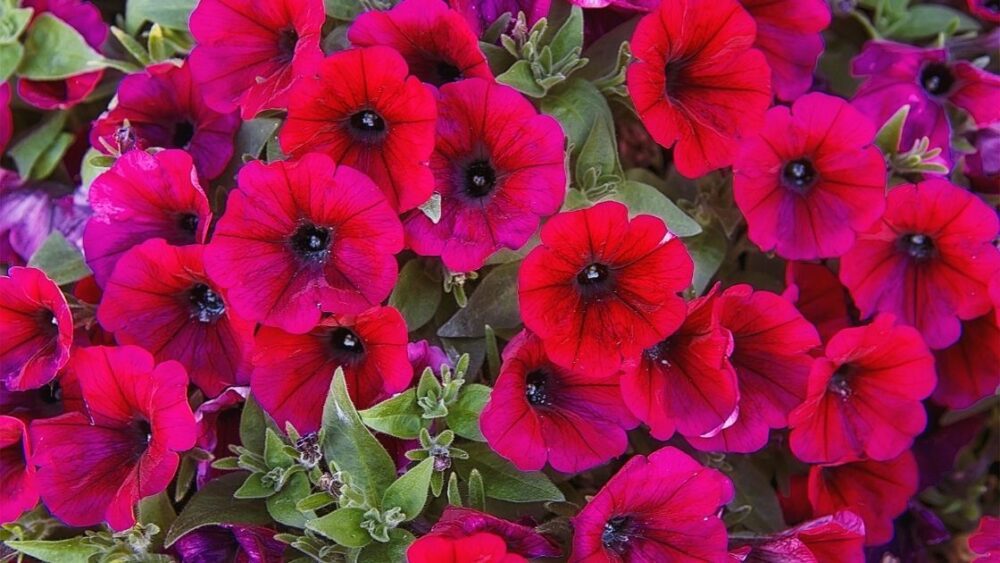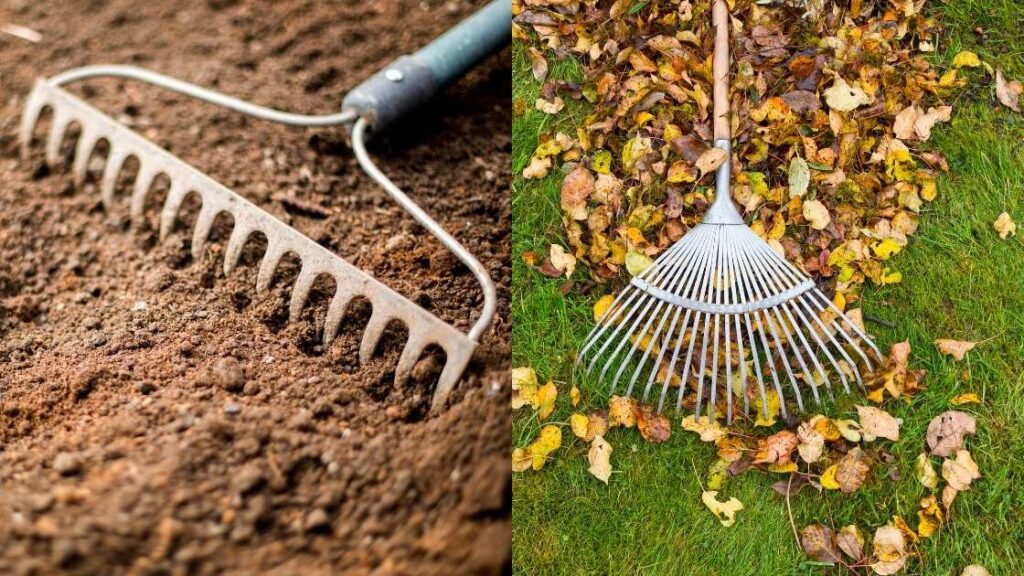
Rakes can handle large amounts of crunchy leaves and thick loamy soil when clearing up garden debris, and spreading fill material. A rake, however, might imply something different in a job that lists it as a necessity, but similarly, the bow and leaf rake are almost the same, but their usages vary. In this article we will discuss these rakes and how what their used for.
What Are Bow Rakes, and When Should You Use Them?
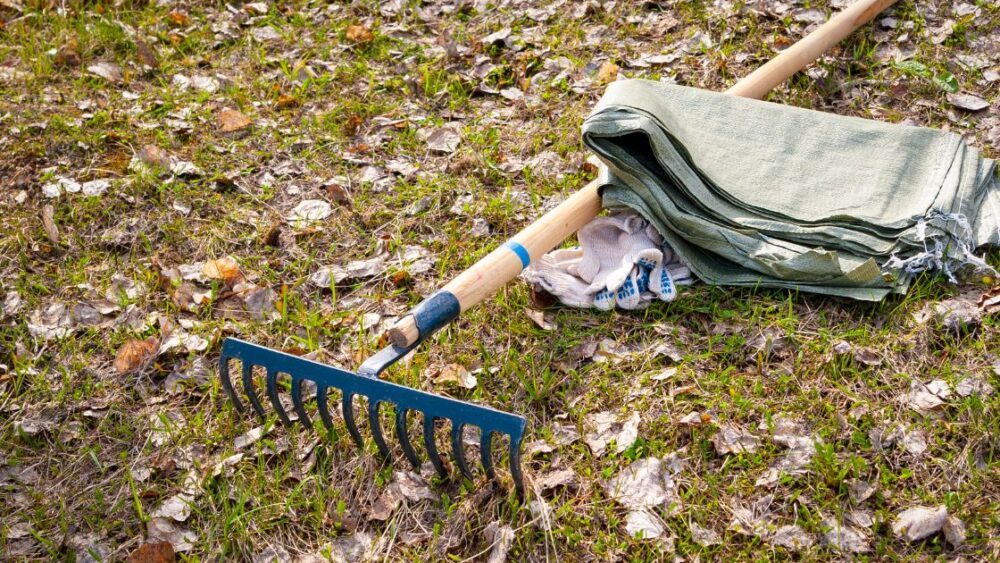
A bow rake is a subset of garden rakes that have an extension that separates the handle and bar, allowing the flat back of the bar to be used for scraping and leveling.
The bow rake is essential for your garden if you need to clear the yard of heavier materials and other waste since the tines are ridged in comparison to a leaf rake. In contrast to conventional rakes, this one has short tines that run parallel to the long, straight handle. The rigidity and durability of these tools would make them more effective than a typical leaf rake. The usage possibilities for a bow rake are endless and can be used for almost any type of heavy waste cleanup that is also produced on construction site.
Browse our Affiliate Products
For more information on tines and other aspects, check out these articles:
- What are Tines on a Rake? (Differences and Uses)
- Should You Leave Pine Needles Under Trees or Clean Them Up?
- What Tools Should a Beginner Gardener Have?
- Garden Tool Racks (Types and Uses)
Different Sized Bow Rakes and Their Uses
There are various sizes available for the bow rakes; for example, the size 14 rake features a broad tooth head for excellent coverage, and its brow form adds strength and stability. This size is ideal for compacting, spreading mulch and gravel evenly, and breaking up and loosening solids in your garden.
The size 16 bow rake can handle the bulk of your gardening tasks and is steadier than the size 14 version. Nearly all types of the debris on your property can get removed thanks to it. It spreads mulch and has the capability to compact gravel and soil in your garden. Although most 16-tine steel bow rakes are produced for commercial use, you may still use tools of the best quality in your garden.
Click here to check out our affiliate selection of bow rakes: Bow Rakes
When Should You Use Them?
When there is so much debris on the ground in the spring, the bow rake assists in cleaning your garden; for instance, while picking up rubbish or matted, compacted dead turf, its sharp tines would rip through the grass. They also work great in clearing thick and compacted pine needles since they have strong tine teeth.
Also they help in leveling the components like soil, mulch, gravel, and compost while having the ability to provide the finish details with the flat part of the bow rake head.
Pros and Cons of Bow Rakes
Sand, dirt, gravel, and compacted turf are heavier materials that bow rakes are designed to handle. The robust construction of a bow rake makes it the ideal tool for tasks like raking leaves, spreading mulch, and leveling soil in the garden and yard. You might find only this flexible tool in place of a rake.
Following are some pros and cons of bow rakes:
Pros:
- The rake is of commercial standard and can complete the task with ease.
- As a sturdy gardening rake, it provides the reliability you need.
- A bow rake makes it easy to rake up grass, leaves, and other garden detritus.
- As carbon steel is constructed, the tines have a laser-cut appearance.
Cons:
- Unlike other models constructed of fiberglass, it has a hardwood handle that deteriorates over time.
- Given that it is steel, weight may concern some people.
- Does not rake up fine material on hard surfaces.
What Are Leaf Rakes and When Should You Use Them?
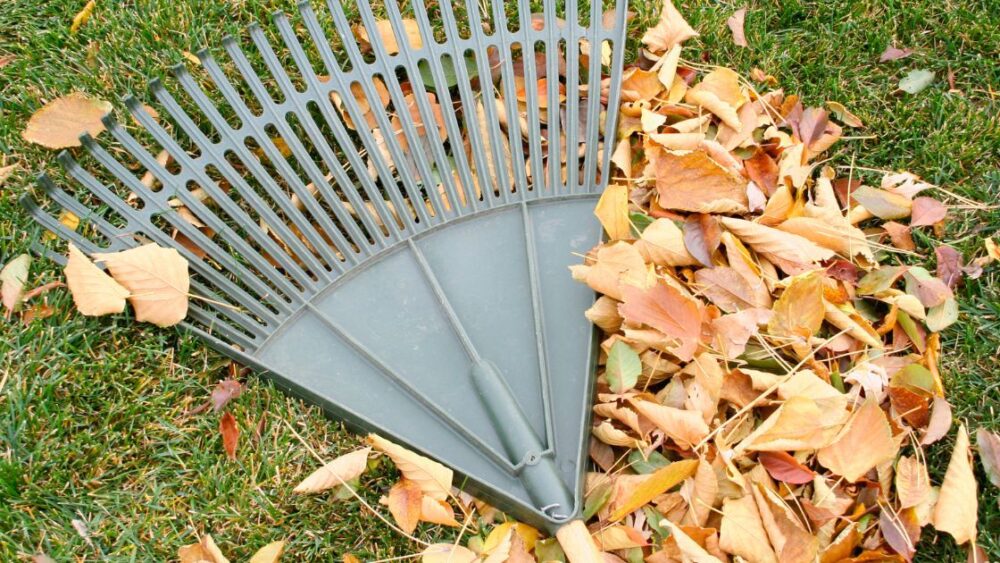
Leaf rakes are tools with a handle ending in a head used in gardening or landscaping that usually has a fan like pattern. Leaf rakes are typically used to rake to up leaves and other lighter materials and clear areas that are hard to get to. Since they come in a variety of different sizes, you can find one to certainly suite your needs such a shrub rake. These rakes have a narrow tine fan pattern that fit in tight hard to get to areas.
Leaf rakes are more versatile than most, but won’t usually be as strong as rakes designed to be used with heavier materials such as medium to large rocks. Leaf rakes are designed to scoop mulch, move leaves, gather, scrape, and level. Other types of leaf rakes only have the ability to gather small pockets of leaves and other small light materials. When searching for the perfect leaf rake, make sure you purchase one that is wide enough for your needs, but is also not small enough to do double work.
Leaf rake tines (which are the finger like part of the rake) can range from 8 inches to 30 inches in fan width.
Click here to check out our affiliate selection of leaf rakes: Leaf Rakes
When Should You Use Them?
There are several typical uses for leaf rakes which are generally used in yard cleanup, so for example are:
- Leaf clean-up
- Moving mulch
- Collecting trash
As such, the firm pointed tines are used to scrape or (rake) up any and all light material that is unwanted. Some types of leaf rakes have longer and wider tines while others have shorter and thinner tines. This is great for accessibility while making a job cleanup easier.
Additionally, you may want to purchase a leaf rake with a wider tine pattern for general yard leaf clean. It does not make sense to use a smaller pattern for a big area. Also, they are not made to move heavy weight, but rather to pull and make small piles of leaves and other small debris.
As with everything else, leaf rakes do have limitation and working with heavier materials usually ends up in handle failure which can snap or bend. This also happen if you try and push piles for one point to another.
Uses of Leaf rakes
Leaf rakes are more efficient for collecting leaves and other light items than other types rakes. Since they typically have spaces between their tines, tiny materials can pass through leaving behind minimal material. But heavier residues, such as stones and dead plant roots, bow rakes should be used since they are more ridged and strength to push and pull.
As specified, they are normally used for light weight yard clean-up, but in combination with other tools they perform miracles. Depending on the types of leaf rake you purchase, some can carry or pull small rocks and other light to medium weight debris. Usually, they are made to make piles of green waste, or other waste for later disposal.
Additionally, you find hand rakes that attach to each hand to scoop-up debris and dispose. Click below to check out this amazon.com pick.

Gardenised Pair of Leaf Scoops, Hand Rakes for Lawn and Garden Cleanup (QI003286)
Pros and Cons of Leaf Rakes
Following are some pros and cons of leaf rakes:
Pros:
- Gathering leaves and garden debris
- Spreading ground covering
- Made from plastic, aluminum, metal
- Available in different fan tine sizes
Cons:
- Not made to push material
- Rake handle may break if materials are to heavy
- Cannot carry heavy material
Conclusion
A leaf rake will be helpful if you have a backyard or garden. The kind of rakes you require will vary on the jobs you undertake, even though the designs are the same. Various lawn issues can be significantly decreased by routinely raking your grass in the spring, fall, and just about any time yard clean up is needed. Specifically, it will aid in lowering the amount of thatch accumulated on your lawn.
